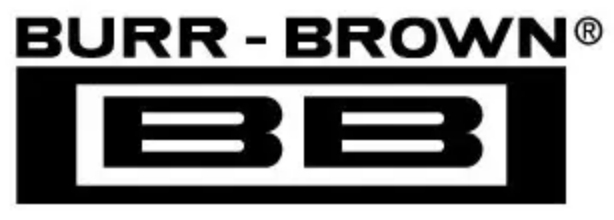THEORY OF OPERATION
The AFE1124 consists of a transmit and a receive channel.
It interfaces to the HDSL DSP through a six wire serial
interface, three wires for the transmit channel and three
wires for the receive channel. It interfaces to the HDSL
telephone line transformer and external compromise hybrid
through transmit and receive analog connections.
The transmit channel consists of a switched-capacitor pulse
forming network followed by a differential line driver. The
pulse forming network receives 2-bit digital symbol data and
generates a filtered 2B1Q analog output waveform. The
differential line driver uses a composite output stage com-
bining class B operation (for high efficiency driving large
signals) with class AB operation (to minimize crossover
distortion).
The receive channel is designed around a fourth-order delta
sigma A/D converter. It includes a difference amplifier
designed to be used with an external compromise hybrid for
first order analog echo cancellation. A programmable gain
amplifier with gains of 0dB to +12dB is also included. The
delta sigma modulator operating at a 24X oversampling ratio
produces a 14-bit output at rates up to 584kHz (1.168Mbps).
The receive channel operates by summing the two differen-
tial inputs, one from the line (rxLINE) and the other from the
compromise hybrid (rxHYB). The connection of these two
inputs so that the hybrid signal is subtracted from the line
signal is described in the paragraph titled “Echo Cancella-
tion in the AFE”. The equivalent gain for each input in the
difference amp is one. The resulting signal then passes to a
programmable gain amplifier which can be set for gains of
0dB through +12dB. Following the PGA, the ADC converts
the signal to a 14-bit digital word.
The serial interface consists of three wires for transmit and
three wires for receive. The three wire transmit interface is
transmit baud rate clock, transmit 48x oversampling clock
and Data Out. The three wire receive interface is receive
baud rate clock, receive 48x oversampling clock and Data
In. The transmit and receive clocks are supplied to the
AFE1124 from the DSP and are completely independent.
DIGITAL DATA INTERFACE
Data is received by the AFE1124 from the DSP on the Data
In line. Data is transmitted from the AFE1124 to the DSP on
the Data Out line. The paragraphs below describe the timing
of these signals and data structure.
Data is transmitted and received in synchronization with the
48x transmit and receive clocks (tx48xCLK and rx48xCLK).
There are 48-bit times in each baud period. Data In is
rxbaudCLK
rx48xCLK
Data Out
HDSL
DSP
txbaudCLK
tx48xCLK
Data In
AFE1124
FIGURE 1. DSP Interface.
4ns
txbaudCLK
from DSP
4ns
tx48xCLK
from DSP
48
1
4ns
A
4ns
2
3
4
B
15
16
47
48
1
Data In
from DSP
MSB
Bit 15
LSB
Bit 0
MSB
Bit 15
Transmit Timing Notes: (1) A baud period consists of 48 periods of the tx48xCLK. (2) The falling edge of the txbaudCLK
can occur anywhere in area A. The rising edge can occur anywhere in area B. However, neither edge of the txbaudCLK
can occur within 4ns (on either side) of any rising edge of tx48xCLK. (3) The AFE1124 reads Data In on the rising edge
of the tx48xCLK. Data In must be stable at least 4ns before the rising edge of tx48xCLK and it must remain stable at
least 4ns after the rising edge of tx48CLK. (4) Symbol data is transferred to the transmit pulse former after the LSB is
read. The output analog symbol data reaches the peak of the symbol approximately 24 tx48xCLK periods later.
FIGURE 2. Transmit Timing Diagram.
®
AFE1124
6

 BURR-BROWN [ BURR-BROWN CORPORATION ]
BURR-BROWN [ BURR-BROWN CORPORATION ]